- Home
- Tom Clancy
Carrier: A Guided Tour of an Aircraft Carrier Page 12
Carrier: A Guided Tour of an Aircraft Carrier Read online
Page 12
Pilot Training: The SNA Pipeline
SNA PFT is designed to teach pretty much the same basic flight skills that a civilian would need to obtain a private pilot’s license. It consists of some sixty-six hours of flight training, as well as a syllabus of ground classroom and simulator training. The actual flight training includes basic aerobatics, formation flying, and military flight procedures. This is quite similar to that of the Army and USAF. However, the way that training is conducted has recently changed a great deal for all U.S. military air personnel. These changes have resulted from the 1986 Goldwater-Nichols defense reform legislation. Specifically, Goldwater-Nichols encouraged the Navy, Air Force, and Marine Corps to find ways to combine common tasks into “joint” (i.e., multi-service) programs and units. The consequence for pilot training has been to combine primary/undergraduate flight training, as well as training for a number of different missions and airframes. To that end, the services have established joint training squadrons around the country. They have further teamed up to build a new common primary/undergraduate trainer, the T-6A Texan II, which will enter service in 1999. Based upon the Swiss Pilatus PC-9 turboprop trainer, it will provide a truly economical joint training solution for primary/undergraduate flight training.
Thus a young SNA going through PFT in 1997 might be found at Vance AFB near Enid, Oklahoma. Assigned to the 8th Flying Training Squadron (FTS), he will have done his PFT flight training in an Air Force T-37B, in a joint unit commanded by a naval officer, Commander Mark S. Laughton. Similar squadrons are located at NAS Pensacola, Randolph AFB and NAS Corpus Christi in Texas, as well as other bases. Since the joint training squadrons have proved successful, plans are under way to provide joint training at the airframe level where it is appropriate. For example, since all the services with fixed-wing aircraft fly variants of the venerable C-130 Hercules, there will soon be a single C-130 pipeline unit for training the air crews.
At the end of the PFT phase of training, cadets find out what “community” they will be headed for at the completion of their training. Though just a fraction the size of the USAF, the air forces of the sea services are even more diverse in their roles and missions. Therefore, following the basic phase of PFT, cadets move onto one of five training pipelines (all of which have intermediate and advanced phases). These include:• Strike (Tactical Jets)—This course of training provides student trainees for the F-14 Tomcat, F/A-18 Hornet, AV-8B Harrier II, EA-6B Prowler, S-3 Viking, and ES-3 Shadow aircraft. Normally, strike pipeline SNAs train at the same base where they did their PFT work. Along with further classroom work in aerodynamics, engineering, meteorology, communications, and navigation, there is flying. A lot of flying! All told, the intermediate and advanced phases of the strike pipeline PFT provide for around 150 flight hours, covering a great range of required skills and knowledge. These include flight instruction in visual and instrument flying, precision aerobatics, gunnery/weapons delivery, high- and low-altitude flight, air combat maneuvering (ACM), and formation flying. Night flying is also taught, along with flying in a variety of weather conditions, and radar approaches/landings. During this time also comes the dreaded carrier qualification, where the SNA meets up with the deck of an actual aircraft carrier for the first time. To help the students along, extensive use is made of part-task trainers based upon personal computers (PCs), as well as high-end full-motion simulators. However, no amount of simulation and preparation can insure that everyone completes the roughly sixteen-month course.For years, this phase of training had the SNAs flying either the T-2C Buckeye or TA-4J Skyhawk, both classic two-seat training aircraft. But a long-overdue replacement is finally coming into service after a series of problems and delays. Known as the T-45 Goshawk training system, it is based upon a heavily modified British Aerospace Hawk trainer, and is designed to provide a beginning-to-end training for the Strike pipeline. This means that the contractor (Boeing, through the acquisition of McDonnell Douglas) provides everything required—simulators, computer-based-trainers, the T-45 training aircraft, and all the maintenance personnel. In order to make the training system work for PFT students, the sea services only need to provide personnel (instructors and students), a base, and fuel. The newest version, the T-45C, incorporates a fully functional “glass” cockpit, similar to the F/A-18’s and that of other modern tactical aircraft that the students will eventually fly.25 The T-45C can be used for a much more varied curriculum than the two aircraft it replaces ; and thanks to a fuel-efficient engine and all the new avionics systems, the T-45 training system will actually not only save money, but also improve the quality and fidelity of the various training curriculums.
A flight of Boeing T-45 Goshawk trainers. Based on the British Aerospace Hawk-series trainers, they provide the Navy with an economical jet trainer that is replacing the aging T-2 Buckeye and TA-4 Skyhawk.
BOEING MILTTARY AIRCRAFT
• E-2/C2—This training course supplies air crews to fly the E-2C Hawkeye airborne early-warning aircraft and its transport cousin, the C-2 Greyhound, both of which are powered by twin-engine turboprops. Because the airframes that it supplies air crews for are among the most heavily loaded and difficult to fly on and off carriers, the E-2/C-2 pipeline is unique. Thus, for example, the E-2/C-2 pipeline deletes some of the combat/weapons-oriented portions of the Strike PFT course work. Utilizing the T-44A Pegasus (essentially a twin-engine Raytheon/Beech King Air), the intermediate training is carried out by Naval Training Squadron 31 (VT-31), and is run at NAS Corpus Christi, Texas. The advanced phase is handled by VT-4 at NAS Pensacola, Florida, flying T-45’s.
• Maritime—Since the sea services fly several types of four-engine turboprop aircraft (the P-3/EP-3 Orion and C-130/KC-130/HC-130 Hercules), a separate pipeline (Maritime) supports these communities. The Maritime syllabus begins with six additional weeks of flying at the primary PFT base. For the remaining twenty weeks of the course (intermediate and advanced), the students fly the T-44A Pegasus with VT-31 at NAS Corpus Christi for an additional eighty-four flight hours of instruction. Since these aircraft never land on carriers, the syllabus concentrates on multi-engine aircraft operating procedures, especially in emergency and all-weather operations.
• E-6—One of the more chilling missions flown by naval aviators (a mission unique to the Navy) involves flying the E-6 Mercury—the TACMO (Take Charge and Move Out) aircraft. TACMO was originally the control function for the Navy’s Trident Fleet Ballistic Missile (FBM) submarines, but its mission has grown. Based on a Boeing 707 airframe, the E-6 Mercury is packed with secure communications and battle-management equipment. Along with the gear for the TACMO mission, the E-6 carries a fully equipped battle staff from the U.S. Strategic Command (STRATCOM—BASED at Offut AFB near Omaha, Nebraska). This allows the E-6’s to control the launch and weapons release of all U.S. nuclear forces (bombers, land-based missiles, and sub-launched missiles) from a (relatively !) secure airborne command post (this job was previously handled by the USAF fleet of EC-135 Looking Glass aircraft). In the event that a nuclear strike were to destroy the National Command Authorities in Washington, D.C., and other land-based locations, the TACMO aircraft would still be able to order a counterstrike.To support this highly specialized mission, the Navy has a specific pipeline to supply air crews for this single type of airframe. While generally like the Maritime pipeline, the multi-engine-trainer time is carried out on the new T-1A Jayhawk Tanker/Transport Trainer System (TTTS—based on the Raytheon/Beech 400A business jet). Like the T-45 training system, the Jayhawk training curriculum makes extensive use of computerized task trainers and simulators. Overall, the E-6 pipeline emphasizes all-weather flight techniques and cockpit resource management.
• Helicopter—Since about half of sea service aircraft are helicopters, the rotorcraft course of study is second only to the strike pipeline in numbers of aviators trained. The Helicopter intermediate-phase PFT is composed of six additional weeks at the primary training base, with an emphasis on instrument flying. This is follow
ed by the twenty-one-week advanced phase of the Helicopter pipeline, which is composed of 116 hours of flight training in the TH-57B/C Sea Ranger helicopter (the Navy’s trainer version of the famous Bell Jet Ranger business/utility helicopter). Along with the flying, the classroom work includes helicopter aerodynamics and engineering, night and cross-country flying, as well as combat search-and-rescue techniques. Finally, the Helicopter pipeline SNAs actually take off and land from the Helicopter Landing Trainer (HLT), a specially configured barge at NAS Pensacola.
The decision about where an individual goes is based on several factors, most importantly where he or she finishes in the first part of their PFT class. Normally, high-scoring students are funneled into the “glamor” Naval aviation assignments, like the fighter/attack communities. Since air wing and carrier skippers have traditionally come from the “fast movers,” assignment to one of these communities carries great weight, status, and self-esteem. Still, more than a few young aviators choose other specialties, such as helicopters or support aircraft. Though one reason is that the skills of flying transport and cargo aircraft have greater value in the civilian job market, sometimes trainees just want to fly a particular kind of aircraft, or a specific mission. Whatever community the trainees want, the personnel detailers do their best to match these desires with the needs of the Navy and Marine Corps.
While every SNA undergoes a rigorous training regime, those in the Strike and E-2/C-2 pipelines clearly have the toughest challenge—learning to make arrested landings aboard aircraft carriers. You cannot overemphasize how this one skill, more than any other, sets Naval aviators apart from their land-based counterparts. Landing on a moving ship at sea is insanely difficult, and it must be done with absolute precision every time. In fact, no other phase of SNA training “washes out” so many young fliers. The defining moment for every naval aviator occurs when they come out of the break and line up into the “groove” for their first carrier qualification. Terrifying. Heart-stopping. Insane. That’s what they all think when they first look down and out at a carrier and realize they’ll have to land on that in just about fifteen seconds!
To survive your first set of carrier qualifications (naval aviators have to requalifiy literally dozens of times in the course of a career), the key is to make “good” landings as early as possible during qualifications. This is because your final score is an average of all your landing attempts. If you start out poorly, then you’ve dug yourself a hole that is almost impossible to get out of. The Navy likes SNAs who are “comfortable” and “natural” with the carrier landing process (as if this is ever possible!), and pilots who have to “learn” or “force” it are considered potentially dangerous, and not suited for the trade.
NFO Training: The Guys in Back
Pilots and NFOs need each other just to survive. And it’s not just part of the job. The men and women who fly for the sea services have a special bond; they look out for each other in the air and on the ground. This comradeship, added to the many other rewarding aspects of Navy flying, helps keep naval aviators coming back to reenlist. Just as with pilots, the path to becoming an NFO begins at NAS Pensacola, with the same six-week API course taken by SNAs. But then the SNFOs are assigned to their own PFT, run by VT-10. Here they spend fourteen weeks learning basic airmanship, including twenty-two hours of flying time in a PFT trainer. Though they spend eight of these in the pilot’s seat, they are not allowed to solo. The SNFOs then undergo an extensive PC-based training course in aircraft systems, which includes training on radio and navigation procedures, and classroom work in aerodynamics, emergency procedures, flight rules and regulations, and cockpit resource management. Once the basic PFT course is completed, the SNFOs continue onto their intermediate PFT courses via one of two pipelines: Navigator and Tactical Navigator Intermediate Training: • Navigator—The Navigator pipeline supplies personnel for the P-3 and EP-3 Orion; C-130, KC-130, and HC-130 Hercules; and E-6 Mercury TACMO communities. Twenty-two weeks long, the Navigator course is run by the Air Force’s 562nd FTS at Randolph AFB, Texas. There, SNFOs in the Navigator pipeline complete eighty hours of airborne flight training in the T-43A trainer (a modified Boeing 737), learning the difficult trade of long-range and over-water navigation. These include use of celestial, radio, and satellite navigation equipment, as well as secure voice and data transmission systems.
• Tactical Navigator Intermediate Training—Every SNFO who is not assigned to the Navigator course at Randolph AFB goes into the Tactical Navigator Intermediate Training (TNIT) pipeline. This course is designed to provide NFOs for all the “tactical” (i.e., combat) aircraft communities in the sea services—such as the F-14 Tomcat, the S-3B Viking, the E-2C Hawkeye, and the EA-6B Prowler. The TNIT SNFOs take their training with VT-10 at NAS Pensacola, and the course lasts fourteen weeks. The flight training for TNIT SNFOs primarily provides experience in low-level navigation and air-traffic-control procedures and is currently accomplished in contractor-operated T-39Ns (modified Sabreliner business jets); but this will change shortly, as the services begin transitioning over to jointly operated T-1A Jayhawks. Already, the T-1As are augmenting the T-39Ns for navigational training hops. Upon completion of TNIT, SNFOs are then assigned to one of three advanced training courses:• Strike SNFO: The Strike SNFO course provides advanced training for NFOs heading into the S-3 Viking, ES-3 Shadow, and EA-6B communities. This course is run by VT-86 at NAS Pensacola. Flying in the T-2C (soon to be replaced by the T-45), T-39N, and T-1A. Strike pipeline SNFOs spend sixty flight hours over eighteen weeks learning over-water and low-level navigational procedures. The key course objective is to build crew coordination skills, so that in the heat of a combat or emergency situation, they will be ready to act to survive and complete their assigned missions. Once they complete the Strike course, the SNFOs destined for the EA-6B and ES-3 communities go to a special electronic warfare course at Corry Station on NAS Pensacola. S-3 SNFOs go straight into the S-3 community once they finish their training.
• Strike/Fighter SNFO: The Strike/Fighter SNFO pipeline provides NFOs for the small community of two-seat strike fighters in service in the Navy (F-14 Tomcats) and Marine Corps (F/A-18D Hornets). While similar to the Strike syllabus, the Strike/Fighter SNFO course is longer (twenty-five weeks) to allow the teaching of airborne intercept and radar skills, air combat maneuvering, and air-to-ground weapons deliveries.
• Aviation Tactical Data System (ATDS) SNFO: The ATDS SNFO course provides airborne controllers for the E-2C Hawkeye community. This pipeline is unique in that it is run by an actual fleet unit, Carrier Airborne Early Warning Squadron 120 (VAW-120) at NAS Norfolk, Virginia. The thirty-two hours of ATDS flight training (spread over twenty-two weeks) take place aboard actual fleet E-2C aircraft (also unique in SNFO training).
Now the new aviators can savor their achievements. They have reached the crowning moment when they are issued their naval aviator number and their “Wings of Gold.” Since the earliest days of naval aviation, this small pin has been the symbol that has set them apart from other officers in the sea services. It is now time for them to join the communities and aircraft that will be at the center of their naval careers for the next two decades.
But before they head out to their first fleet assignment, there is one more school for some of the new naval aviators. This is the notorious SERE (Survival, Evasion, Resistance, and Escape) training course, one of the toughest courses any military officer can take. Though its exact details are classified, I do know that it is designed to take “at risk” pilots who will be entrusted with “special” knowledge or responsibilities, and place them into a “real-world” prisoner-of-war (POW) situation. SERE training faces the student with physical and mental stresses similar to those they might expect to experience if they are captured by one of our more unpleasant enemies (North Korea, Iran, Iraq, etc.). As of 1996, there was a single joint SERE school, located at Fairchild AFB near Spokane, Washington. Normally a student attends prior to arriving at his first squadron assign
ment.
Into the Fleet
By now, officers intending to fly for the sea services have been in the military for something over two years and are ready to pass the final hurdle before they begin to repay the million-dollar investment the taxpayers have so far put into their careers. This is their final certification in a Fleet Readiness Squadron (FRS), which teaches the specific skills necessary to operate each type of Navy or Marine Corps aircraft. During the FRS rotation the Navy teaches its Naval aviation professionals the skills that will make them dangerous out in fleet units. Under the supervision of the FRS instructor pilots (IPs), the new NAs and NFOs learn the tactically correct methods for employing the weapons, systems, and sensors of their community’s aircraft. The IPs themselves, normally very skilled airmen who have completed a tour or two at sea, are the final quality check that determines whether a new aviator is allowed to go out to sea. In general, the FRS is the vessel where a particular community’s “tribal knowledge” is kept to be passed along to the nextgeneration of air crews. And at FRSs, many of the new concepts for weapons and systems are born.26
The moment of truth. A U.S. naval aviator prepares to launch in an F/A-18C on the deck of the USS George Washington (CVN-73).
OFFICIAL U.S. NAVY PHOTO
For the new NAs or NFOs, the FRS phase of their career can go quickly, or last a while. Exactly how long depends on how fast they learn to operate a fleet aircraft to the exacting standards of the FRS IPs and how soon jobs become available in one of the fleet squadrons. The more difficult aircraft like the F-14 Tomcat or EA-6B Prowler might require a young aviator to be held back so that certain skills can be reinforced; and some are “washed out” of one aircraft type and moved to another that’s less demanding.

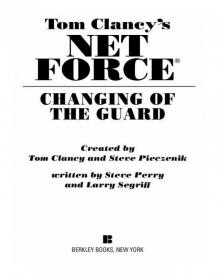 Changing of the Guard
Changing of the Guard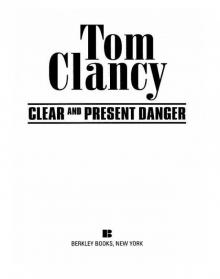 Clear and Present Danger
Clear and Present Danger Hounds of Rome
Hounds of Rome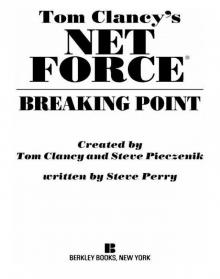 Breaking Point
Breaking Point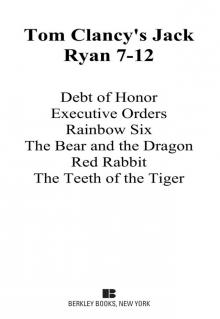 Tom Clancy's Jack Ryan Books 7-12
Tom Clancy's Jack Ryan Books 7-12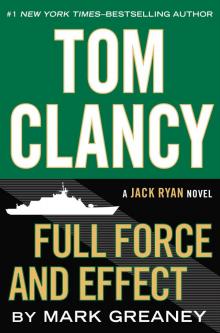 Full Force and Effect
Full Force and Effect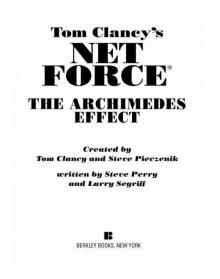 The Archimedes Effect
The Archimedes Effect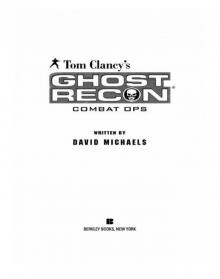 Combat Ops
Combat Ops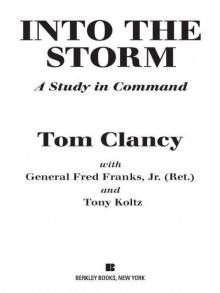 Into the Storm: On the Ground in Iraq
Into the Storm: On the Ground in Iraq Under Fire
Under Fire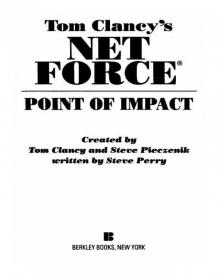 Point of Impact
Point of Impact Red Rabbit
Red Rabbit Rainbow Six
Rainbow Six The Hunt for Red October
The Hunt for Red October The Teeth of the Tiger
The Teeth of the Tiger Conviction (2009)
Conviction (2009)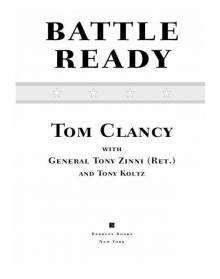 Battle Ready
Battle Ready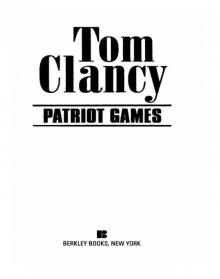 Patriot Games
Patriot Games The Sum of All Fears
The Sum of All Fears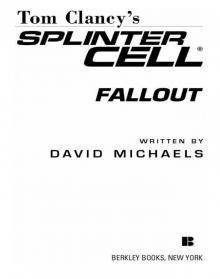 Fallout (2007)
Fallout (2007) Red Storm Rising
Red Storm Rising The Cardinal of the Kremlin
The Cardinal of the Kremlin Executive Orders
Executive Orders Lincoln, the unknown
Lincoln, the unknown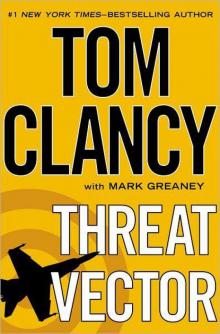 Threat Vector
Threat Vector The Hunted
The Hunted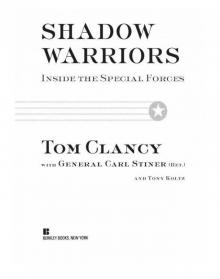 Shadow Warriors: Inside the Special Forces
Shadow Warriors: Inside the Special Forces End Game
End Game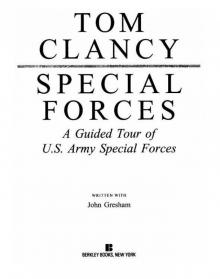 Special Forces: A Guided Tour of U.S. Army Special Forces
Special Forces: A Guided Tour of U.S. Army Special Forces Locked On
Locked On Line of Sight
Line of Sight Tom Clancy Enemy Contact - Mike Maden
Tom Clancy Enemy Contact - Mike Maden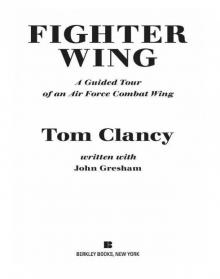 Fighter Wing: A Guided Tour of an Air Force Combat Wing
Fighter Wing: A Guided Tour of an Air Force Combat Wing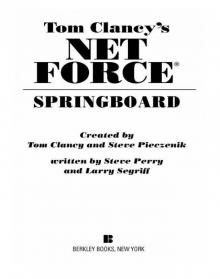 Springboard
Springboard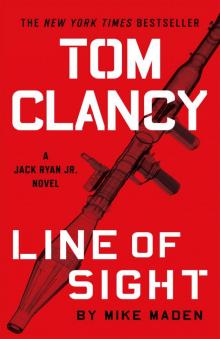 Line of Sight - Mike Maden
Line of Sight - Mike Maden EndWar
EndWar Dead or Alive
Dead or Alive Tom Clancy Support and Defend
Tom Clancy Support and Defend Checkmate
Checkmate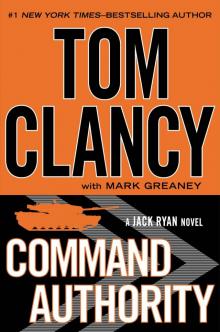 Command Authority
Command Authority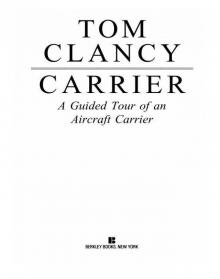 Carrier: A Guided Tour of an Aircraft Carrier
Carrier: A Guided Tour of an Aircraft Carrier Blacklist Aftermath
Blacklist Aftermath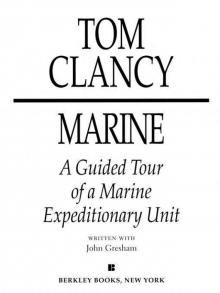 Marine: A Guided Tour of a Marine Expeditionary Unit
Marine: A Guided Tour of a Marine Expeditionary Unit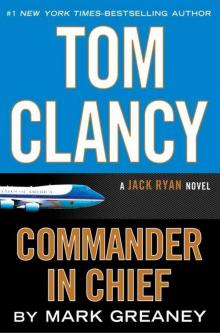 Commander-In-Chief
Commander-In-Chief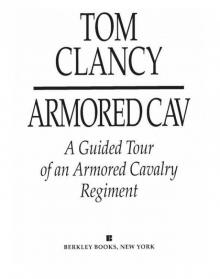 Armored Cav: A Guided Tour of an Armored Cavalry Regiment
Armored Cav: A Guided Tour of an Armored Cavalry Regiment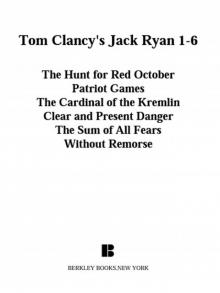 Tom Clancy's Jack Ryan Books 1-6
Tom Clancy's Jack Ryan Books 1-6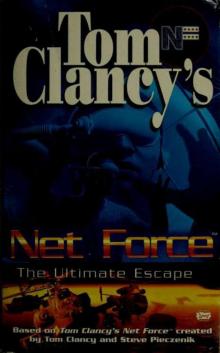 The Ultimate Escape
The Ultimate Escape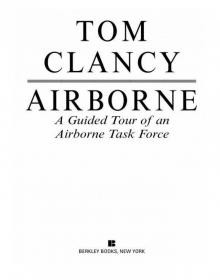 Airborne: A Guided Tour of an Airborne Task Force
Airborne: A Guided Tour of an Airborne Task Force Debt of Honor
Debt of Honor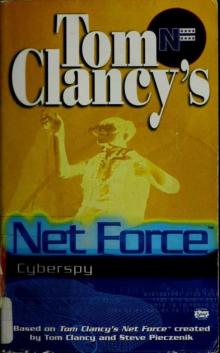 Cyberspy
Cyberspy Point of Contact
Point of Contact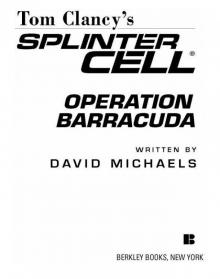 Operation Barracuda (2005)
Operation Barracuda (2005)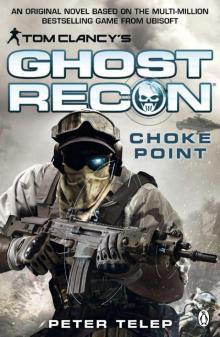 Choke Point
Choke Point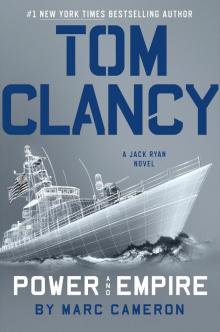 Power and Empire
Power and Empire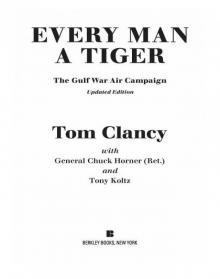 Every Man a Tiger: The Gulf War Air Campaign
Every Man a Tiger: The Gulf War Air Campaign Endgame (1998)
Endgame (1998)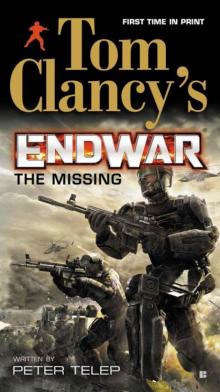 EndWar: The Missing
EndWar: The Missing Splinter Cell (2004)
Splinter Cell (2004)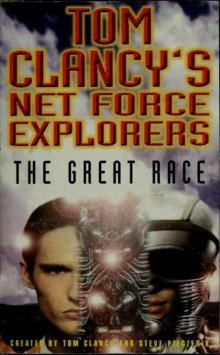 The Great Race
The Great Race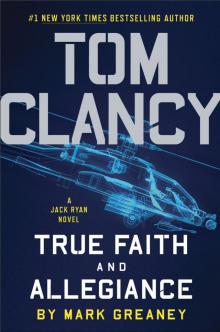 True Faith and Allegiance
True Faith and Allegiance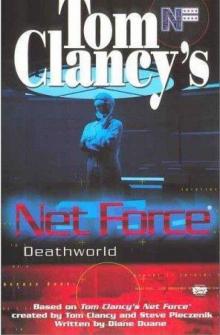 Deathworld
Deathworld Ghost Recon (2008)
Ghost Recon (2008)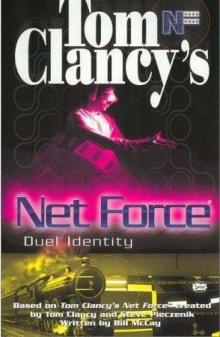 Duel Identity
Duel Identity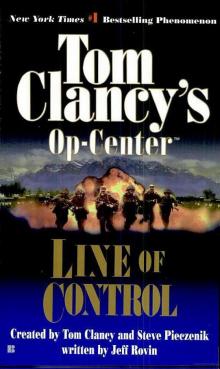 Line of Control o-8
Line of Control o-8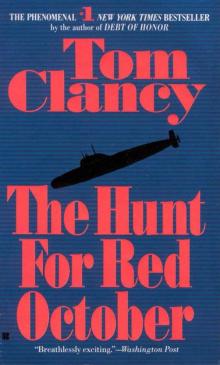 The Hunt for Red October jr-3
The Hunt for Red October jr-3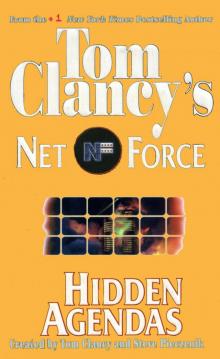 Hidden Agendas nf-2
Hidden Agendas nf-2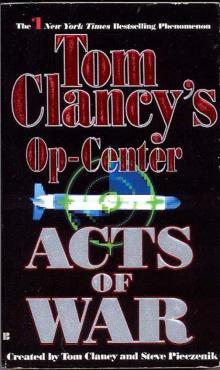 Acts of War oc-4
Acts of War oc-4 Ruthless.Com pp-2
Ruthless.Com pp-2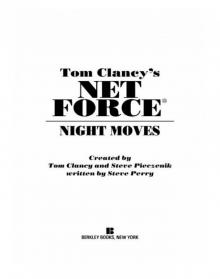 Night Moves
Night Moves The Hounds of Rome - Mystery of a Fugitive Priest
The Hounds of Rome - Mystery of a Fugitive Priest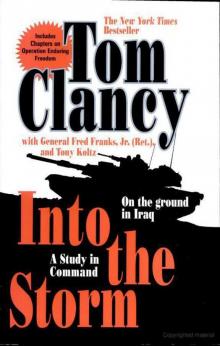 Into the Storm: On the Ground in Iraq sic-1
Into the Storm: On the Ground in Iraq sic-1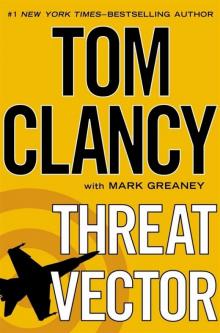 Threat Vector jrj-4
Threat Vector jrj-4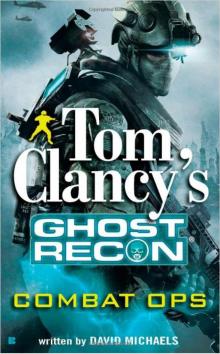 Combat Ops gr-2
Combat Ops gr-2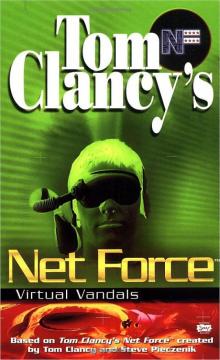 Virtual Vandals nfe-1
Virtual Vandals nfe-1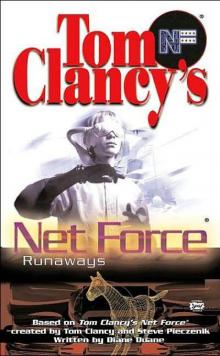 Runaways nfe-16
Runaways nfe-16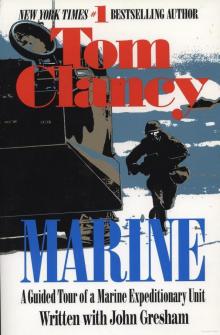 Marine: A Guided Tour of a Marine Expeditionary Unit tcml-4
Marine: A Guided Tour of a Marine Expeditionary Unit tcml-4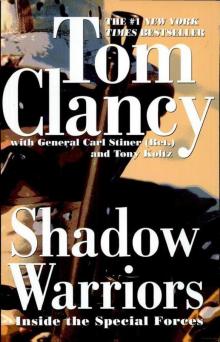 Shadow Warriors: Inside the Special Forces sic-3
Shadow Warriors: Inside the Special Forces sic-3 Jack Ryan Books 1-6
Jack Ryan Books 1-6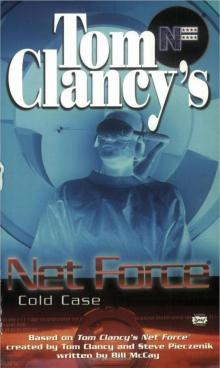 Cold Case nfe-15
Cold Case nfe-15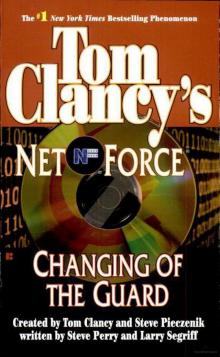 Changing of the Guard nf-8
Changing of the Guard nf-8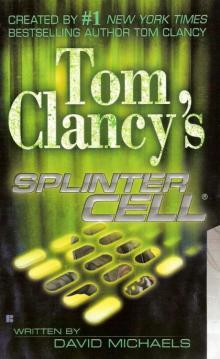 Splinter Cell sc-1
Splinter Cell sc-1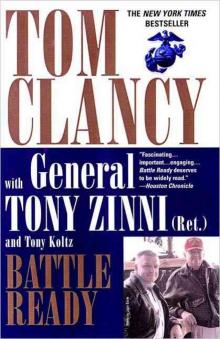 Battle Ready sic-4
Battle Ready sic-4 The Bear and the Dragon jrao-11
The Bear and the Dragon jrao-11 Fighter Wing: A Guided Tour of an Air Force Combat Wing tcml-3
Fighter Wing: A Guided Tour of an Air Force Combat Wing tcml-3 Patriot Games jr-1
Patriot Games jr-1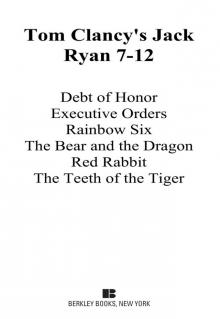 Jack Ryan Books 7-12
Jack Ryan Books 7-12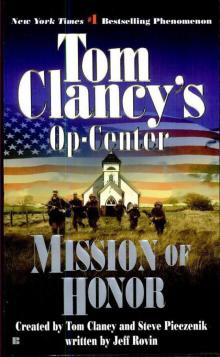 Mission of Honor o-9
Mission of Honor o-9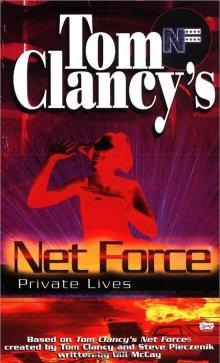 Private Lives nfe-9
Private Lives nfe-9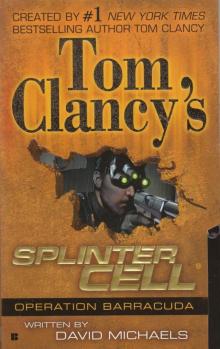 Operation Barracuda sc-2
Operation Barracuda sc-2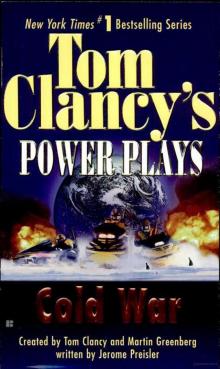 Cold War pp-5
Cold War pp-5 Point of Impact nf-5
Point of Impact nf-5 Red Rabbit jr-9
Red Rabbit jr-9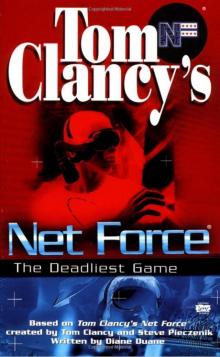 The Deadliest Game nfe-2
The Deadliest Game nfe-2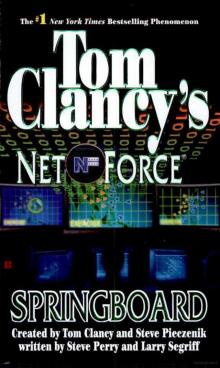 Springboard nf-9
Springboard nf-9 Safe House nfe-10
Safe House nfe-10 EndWar e-1
EndWar e-1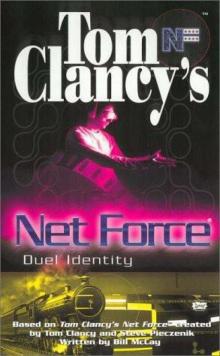 Duel Identity nfe-12
Duel Identity nfe-12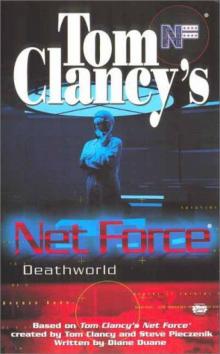 Deathworld nfe-13
Deathworld nfe-13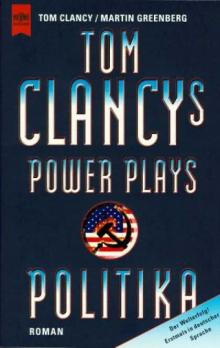 Politika pp-1
Politika pp-1 Rainbow Six jr-9
Rainbow Six jr-9 Tom Clancy's Power Plays 1 - 4
Tom Clancy's Power Plays 1 - 4 Endgame sc-6
Endgame sc-6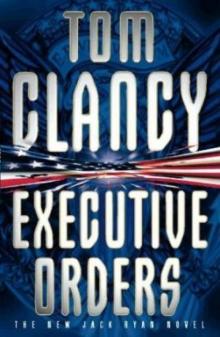 Executive Orders jr-7
Executive Orders jr-7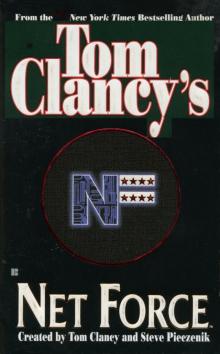 Net Force nf-1
Net Force nf-1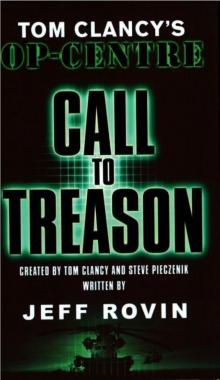 Call to Treason o-11
Call to Treason o-11 Locked On jrj-3
Locked On jrj-3 Against All Enemies
Against All Enemies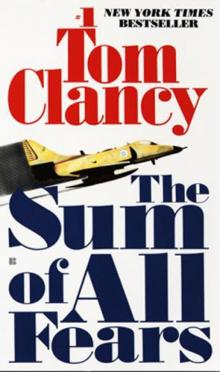 The Sum of All Fears jr-7
The Sum of All Fears jr-7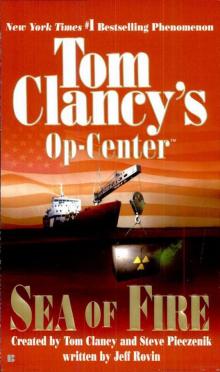 Sea of Fire o-10
Sea of Fire o-10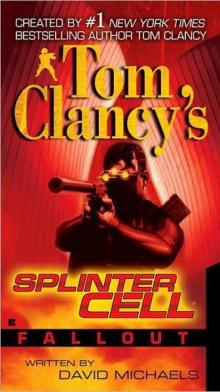 Fallout sc-4
Fallout sc-4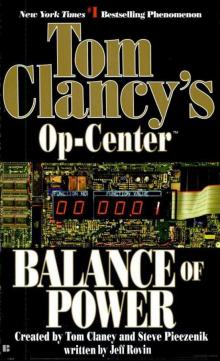 Balance of Power o-5
Balance of Power o-5 Shadow Watch pp-3
Shadow Watch pp-3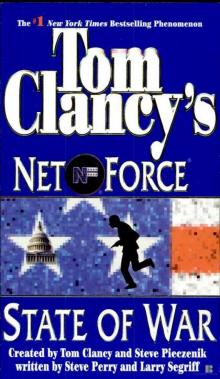 State of War nf-7
State of War nf-7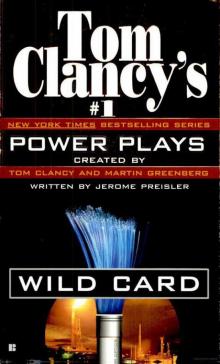 Wild Card pp-8
Wild Card pp-8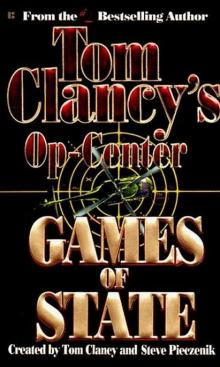 Games of State o-3
Games of State o-3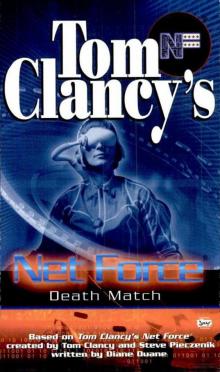 Death Match nfe-18
Death Match nfe-18 Against All Enemies mm-1
Against All Enemies mm-1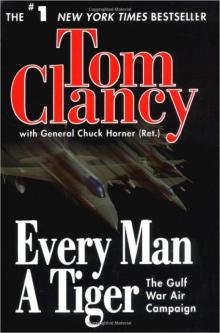 Every Man a Tiger: The Gulf War Air Campaign sic-2
Every Man a Tiger: The Gulf War Air Campaign sic-2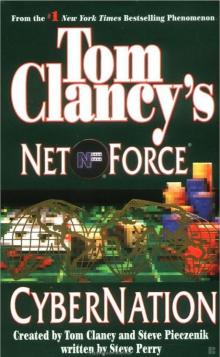 Cybernation nf-6
Cybernation nf-6 Support and Defend
Support and Defend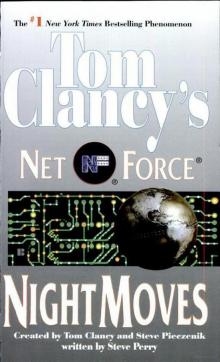 Night Moves nf-3
Night Moves nf-3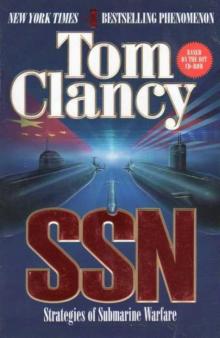 SSN
SSN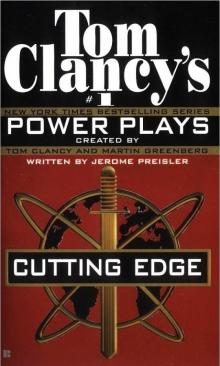 Cutting Edge pp-6
Cutting Edge pp-6 The Cardinal of the Kremlin jrao-5
The Cardinal of the Kremlin jrao-5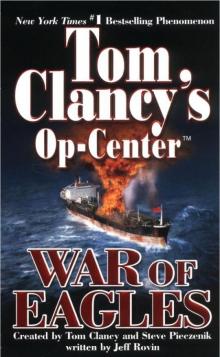 War of Eagles o-12
War of Eagles o-12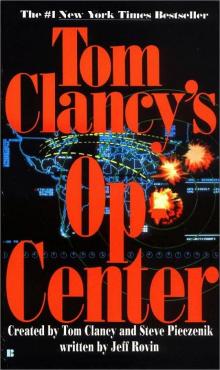 Op-Center o-1
Op-Center o-1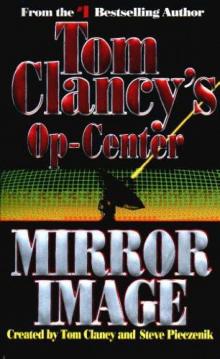 Mirror Image o-2
Mirror Image o-2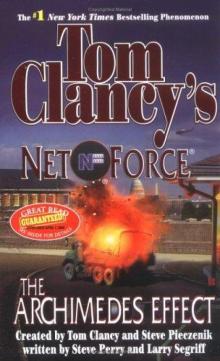 The Archimedes Effect nf-10
The Archimedes Effect nf-10 Teeth of the Tiger jrj-1
Teeth of the Tiger jrj-1 Bio-Strike pp-4
Bio-Strike pp-4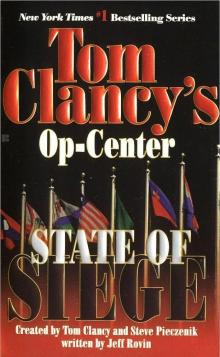 State of Siege o-6
State of Siege o-6 Debt of Honor jr-6
Debt of Honor jr-6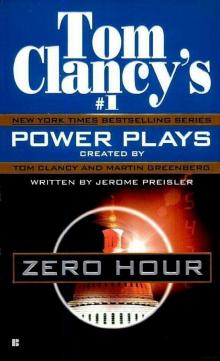 Zero Hour pp-7
Zero Hour pp-7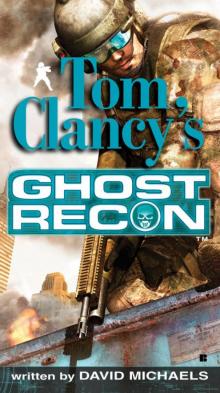 Ghost Recon gr-1
Ghost Recon gr-1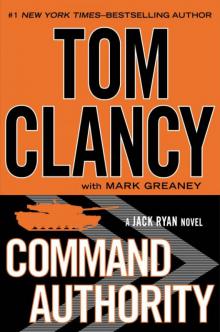 Command Authority jr-10
Command Authority jr-10 Tom Clancy's Power Plays 5 - 8
Tom Clancy's Power Plays 5 - 8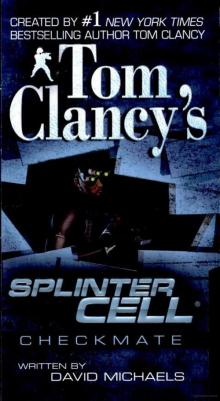 Checkmate sc-3
Checkmate sc-3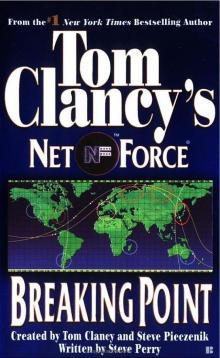 Breaking Point nf-4
Breaking Point nf-4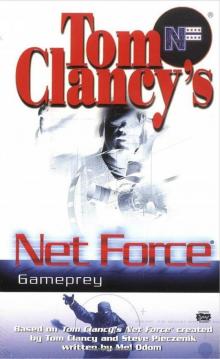 Gameprey nfe-11
Gameprey nfe-11 The Hunted e-2
The Hunted e-2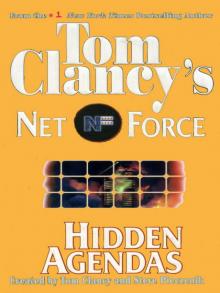 Hidden Agendas
Hidden Agendas Divide and Conquer o-7
Divide and Conquer o-7